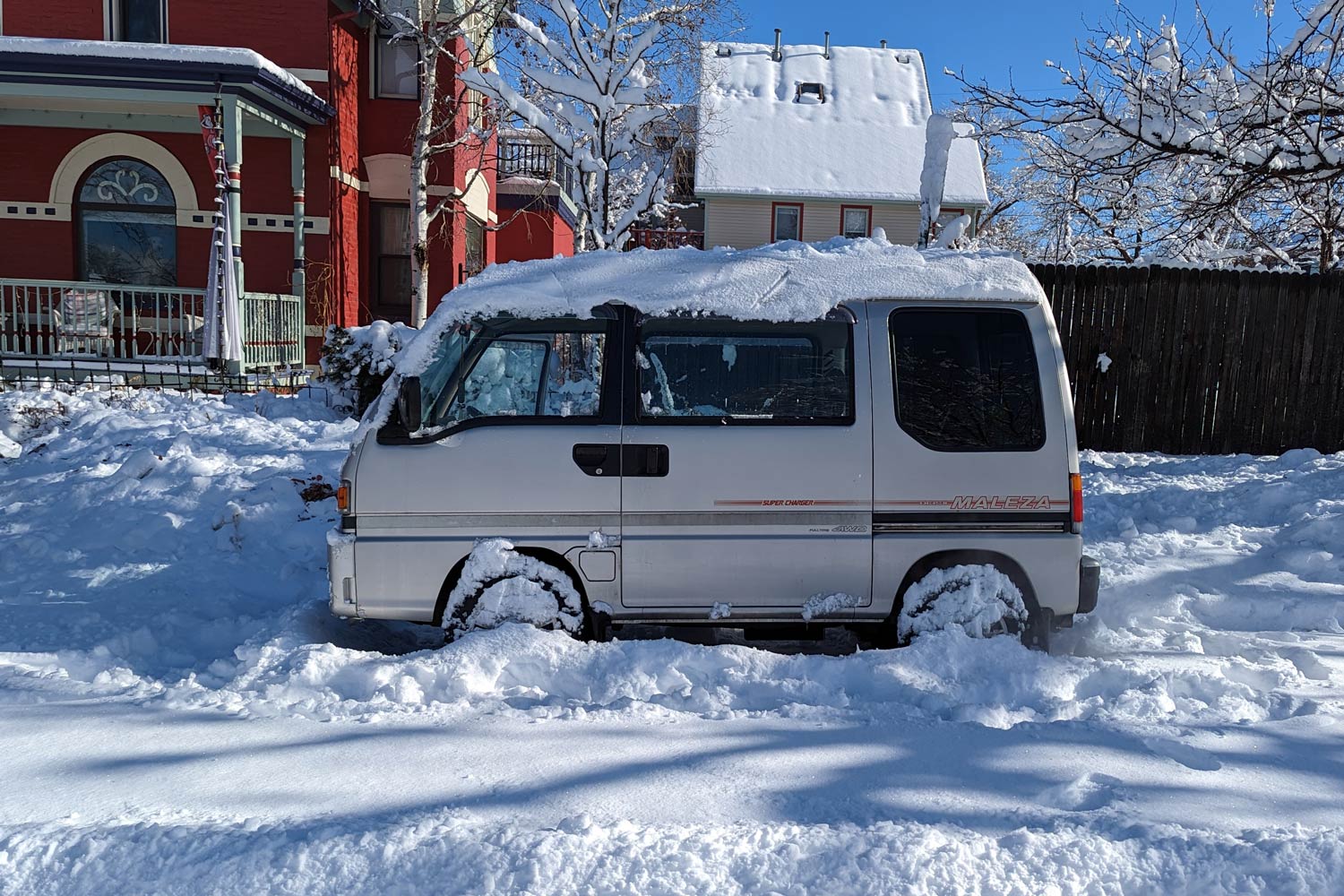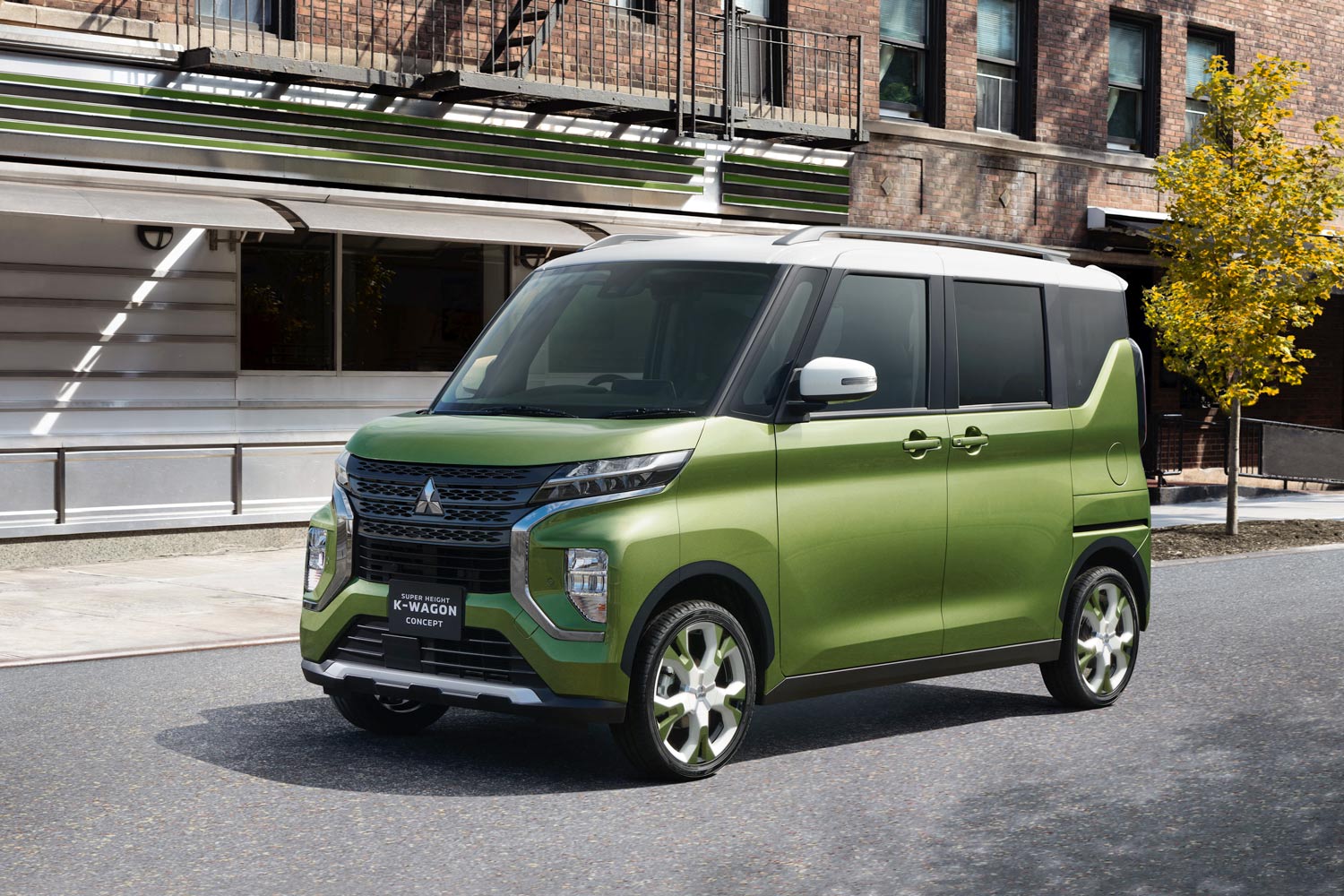What It's Like to Drive a Tiny Kei Car in the U.S.
This small but mighty Japanese workhorse is ideal for running errands or going camping.
 Murilee Martin
Murilee Martin
If you've ever visited Japan, you've seen them everywhere: tiny cars and vans with tall roofs, zipping through crowded alleys, squeezing into minuscule parking spaces, unloading startling quantities of cargo, and even serving as police vehicles. These are kei cars, which qualify for lower fees and taxes in Japan by meeting specifications set for vehicles to meet the "kei" — meaning light — requirements. Dimensions can be no more than about 11 feet, 2 inches long by 4 feet, 10 inches wide. Engine displacement can be no greater than 0.66 liters. Power is also capped at 63 horsepower. You might think that such a tiny, low-power machine would be a nightmare to drive on the roads of the United States, but a kei car can be an excellent city vehicle here.
I've been driving a 1996 Subaru Sambar van daily in Denver for more than a year, and here's what I've learned from the experience.
 Murilee Martin
Murilee Martin
Where Kei Cars Work Best
Most highways in Japan have speed limits of about 60 mph, and that's about the practical top speed of most kei cars. Many of them are capable of higher speeds for brief periods, but the combination of cinder-block-style aerodynamics and tiny engine means a kei van isn't well-suited for long drives on U.S. highways. It can be done, but it is stressful for both driver and engine.
In the city, however, a kei van is one of the most practical vehicles you can drive. Visibility is excellent, with a high seating position and enormous windows. Fuel economy is unbeatable in town, with most kei vans achieving 50 to 60 mpg in city traffic. Any kei car can be shoehorned into parking spaces that seem impossibly small, and you can fit four of them in a typical two-car garage.
Few kei vans have airbags, however, and there isn't much metal between you and the outside world. You'll need to stay very alert when driving one.
 Mitsubishi
Mitsubishi
Loading Up a Kei Van
With the tall roof, seats that fold flat, sliding doors on both sides, and a big hatch in the rear, a typical kei van can swallow a lot of cargo. The low floor also makes loading and unloading easy. If you like car camping, an all-wheel-drive kei van can climb dirt trails up steep grades and then provide a 6- by 4-foot sleeping area inside.
 Mitsubishi
Mitsubishi
Kei Cars Make People Smile
Made by companies we're familiar with in the states, such as Subaru, Nissan, Toyota, Mitsubishi, and Suzuki, kei cars and vans just look friendly when they're rolling down a street full of big menacing vehicles. In my experience, this often defuses the anger that many drivers tend to feel about others on the road.
Some drivers will give a kei car the right of way just to get a better look at it. Pedestrians will often stop and smile, and you'll be the center of attention when you stop in a parking lot or gas station. Be ready to answer a lot of questions about your kei car.
Written by humans.
Edited by humans.
 Murilee Martin
Murilee MartinMurilee Martin is the pen name of Phil Greden, a Colorado-based writer who appreciates Broughams d'Elegance, kei cars, Warsaw Pact hoopties, and the Simca Esplanada.
Related articles
View more related articles